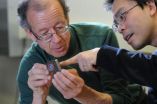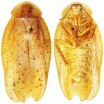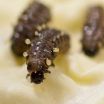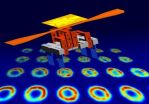(Press-News.org) PROVIDENCE, R.I. [Brown University] — A team of neuroengineers based at Brown University has developed a fully implantable and rechargeable wireless brain sensor capable of relaying real-time broadband signals from up to 100 neurons in freely moving subjects. Several copies of the novel low-power device, described in the Journal of Neural Engineering, have been performing well in animal models for more than year, a first in the brain-computer interface field. Brain-computer interfaces coud help people with severe paralysis control devces with their thoughts.
Arto Nurmikko, professor of engineering at Brown University who oversaw the device's invention, is presenting it this week at the 2013 International Workshop on Clinical Brain-Machine Interface Systems in Houston.
"This has features that are somewhat akin to a cell phone, except the conversation that is being sent out is the brain talking wirelessly," Nurmikko said.
Neuroscientists can use such a device to observe, record, and analyze the signals emitted by scores of neurons in particular parts of the animal model's brain.
Meanwhile, wired systems using similar implantable sensing electrodes are being investigated in brain-computer interface research to assess the feasibility of people with severe paralysis moving assistive devices like robotic arms or computer cursors by thinking about moving their arms and hands.
This wireless system addresses a major need for the next step in providing a practical brain-computer interface," said neuroscientist John Donoghue, the Wriston Professor of Neuroscience at Brown University and director of the Brown Institute for Brain Science.
Tightly packed technology
In the device, a pill-sized chip of electrodes implanted on the cortex sends signals through uniquely designed electrical connections into the device's laser-welded, hermetically sealed titanium "can." The can measures 2.2 inches (56 mm) long, 1.65 inches (42 mm) wide, and 0.35 inches (9 mm) thick. That small volume houses an entire signal processing system: a lithium ion battery, ultralow-power integrated circuits designed at Brown for signal processing and conversion, wireless radio and infrared transmitters, and a copper coil for recharging — a "brain radio." All the wireless and charging signals pass through an electromagnetically transparent sapphire window.
In all, the device looks like a miniature sardine can with a porthole.
But what the team has packed inside makes it a major advance among brain-machine interfaces, said lead author David Borton, a former Brown graduate student and postdoctoral research associate who is now at Ecole Polytechnique Federale Lausanne in Switzerland.
"What makes the achievement discussed in this paper unique is how it integrated many individual innovations into a complete system with potential for neuroscientific gain greater than the sum of its parts," Borton said. "Most importantly, we show the first fully implanted microsystem operated wirelessly for more than 12 months in large animal models — a milestone for potential [human] clinical translation."
The device transmits data at 24 Mbps via 3.2 and 3.8 Ghz microwave frequencies to an external receiver. After a two-hour charge, delivered wirelessly through the scalp via induction, it can operate for more than six hours.
"The device uses less than 100 milliwatts of power, a key figure of merit," Nurmikko said.
Co-author Ming Yin, a Brown postdoctoral scholar and electrical engineer, said one of the major challenges that the team overcame in building the device was optimizing its performance given the requirements that the implant device be small, low-power and leak-proof, potentially for decades.
"We tried to make the best tradeoff between the critical specifications of the device, such as power consumption, noise performance, wireless bandwidth and operational range," Yin said. "Another major challenge we encountered was to integrate and assemble all the electronics of the device into a miniaturized package that provides long-term hermeticity (water-proofing) and biocompatibility as well as transparency to the wireless data, power, and on-off switch signals."
With early contributions by electrical engineer William Patterson at Brown, Yin helped to design the custom chips for converting neural signals into digital data. The conversion has to be done within the device, because brain signals are not produced in the ones and zeros of computer data.
Ample applications
The team worked closely with neurosurgeons to implant the device in three pigs and three rhesus macaque monkeys. The research in these six animals has been helping scientists better observe complex neural signals for as long as 16 months so far. In the new paper, the team shows some of the rich neural signals they have been able to record in the lab. Ultimately this could translate to significant advances that can also inform human neuroscience.
Current wired systems constrain the actions of research subjects, Nurmikko said. The value of wireless transmission is that it frees subjects to move however they intend, allowing them to produce a wider variety of more realistic behaviors. If neuroscientists want to observe the brain signals produced during some running or foraging behaviors, for instance, they can't use a cabled sensor to study how neural circuits would form those plans for action and execution or strategize in decision making.
In the experiments in the new paper, the device is connected to one array of 100 cortical electrodes, the microscale individual neural listening posts, but the new device design allows for multiple arrays to be connected, Nurmikko said. That would allow scientists to observe ensembles of neurons in multiple related areas of a brain network.
The new wireless device is not approved for use in humans and is not used in clinical trials of brain-computer interfaces. It was designed, however, with that translational motivation.
"This was conceived very much in concert with the larger BrainGate* team, including neurosurgeons and neurologists giving us advice as to what were appropriate strategies for eventual clinical applications," said Nurmikko, who is also affiliated with the Brown Institute for Brain Science.
Borton is now spearheading the development of a collaboration between EPFL and Brown to use a version of the device to study the role of the motor cortex in an animal model of Parkinson's disease.
Meanwhile the Brown team is continuing work on advancing the device for even larger amounts of neural data transmission, reducing its size even further, and improving other aspects of the device's safety and reliability so that it can someday be considered for clinical application in people with movement disabilities.
INFORMATION:
In addition to Nurmikko, Borton and Yin, the paper was also co-authored by Juan Aceros, an expert in mechanical engineering.
The National Institutes of Health/National Institute of Biomedical Imaging and Bioengineering and National Institute of Neurological Disorders and Stroke (Grant 1R01EB007401-01), with partial support from the National Science Foundation (Grants: 0937848) and the Defense Advanced Research Projects Agency (Contract: N66001-10-C-2010), funded the research.
*Caution: Investigational device. Limited by federal law to investigational use.
Brown unveils novel wireless brain sensor
2013-02-28
ELSE PRESS RELEASES FROM THIS DATE:
Brain-to-brain interface allows transmission of tactile and motor information between rats
2013-02-28
DURHAM, N.C. -- Researchers have electronically linked the brains of pairs of rats for the first time, enabling them to communicate directly to solve simple behavioral puzzles. A further test of this work successfully linked the brains of two animals thousands of miles apart—one in Durham, N.C., and one in Natal, Brazil.
The results of these projects suggest the future potential for linking multiple brains to form what the research team is calling an "organic computer," which could allow sharing of motor and sensory information among groups of animals. The study was published ...
Replacing soybean meal in pig diets
2013-02-28
Canola, cottonseed, and sunflower products can replace soybean meal in diets fed to pigs, but they contain less protein and energy. To determine if it makes economic sense to use them, producers need to know the concentrations and digestibility of the nutrients they contain. To help them make the decision, University of Illinois researchers examined amino acid digestibility for these products.
"Soybean is by far the biggest oilseed crop in the world," said Hans Stein, professor of animal sciences. "But canola, cottonseed, and sunflowers are grown in areas where soybeans ...
After the human genome project: The human microbiome project
2013-02-28
Bethesda, MD—Earth Day may be more than a month away, but another, more personal, ecosystem has been shown to also be worth protecting—within our bodies are communities of microbes that affect the behavior of human cells hosting them. These communities, called the "microbiome," are so crucial to our health that some consider it to be a complex "second genome." Understanding the interaction of these microbes among one another and their human hosts has the potential to yield insights into numerous diseases and complex human disorders from obesity to susceptibility to infection. ...
Physical activity does not protect against in situ breast cancer
2013-02-28
A European study published in the 'Cancer Epidemiology, Biomarkers & Prevention' journal has analysed the association between physical activities and in situ or non-invasive breast cancer, or, in other words, cancer that has not yet invaded cells within or outside of the breast.
Headed by researchers from ten European countries including Spain, the work carried out under the framework of the European Prospective Investigation into Cancer and Nutrition (EPIC) concludes that physical activity has no relation with the risk of developing this type of non-invasive cancer. ...
Eating junk food while pregnant may make your child a junk food addict
2013-02-28
Bethesda, MD—Here's another reason why a healthy diet during pregnancy is critical to the future health of your children: New research published in the March 2013 issue of The FASEB Journal, suggests that pregnant mothers who consume junk food actually cause changes in the development of the opioid signaling pathway in the brains of their unborn children. This change results in the babies being less sensitive to opioids, which are released upon consumption of foods that are high in fat and sugar. In turn, these children, born with a higher "tolerance" to junk food need ...
Global tipping point not backed by science: Study
2013-02-28
A group of international ecological scientists led by the University of Adelaide have rejected a doomsday-like scenario of sudden, irreversible change to the Earth's ecology.
In a paper published today in the journal Trends in Ecology and Evolution, the scientists from Australia, US and UK argue that global-scale ecological tipping points are unlikely and that ecological change over large areas seem to follow a more gradual, smooth pattern.
This opposes recent efforts to define 'planetary tipping points' ‒ critical levels of biodiversity loss or land-use change ...
The giant cockroach genus Pseudophoraspis expands to the north with 3 new species
2013-02-28
Cockroaches (Blattodea) are an insect order remarkable in their biodiversity and distribution, with more than 4500 species known and great geographical reach. Cockroach fossils date back around 400 million years, which testifies to their great adaptability and endurance that puts them among the planet's great survivors.
The cockroach genus Pseudophoraspism has has been reported from China for the first time thanks to the discovery of three new species: Pseudophoraspis clavellata, Pseudophoraspis recurvata and Pseudophoraspis incurvata, alongside the first regional record ...
Metal ions regulate terpenoid metabolism in insects
2013-02-28
This press release is available in German.
Max Planck scientists in Jena, Germany, have discovered an unusual regulation of enzymes that catalyze chain elongation in an important secondary metabolism, the terpenoid pathway. In the horseradish leaf beetle Phaedon cochleariae a single enzyme can trigger the production of two completely different substances depending on whether it is regulated by cobalt, manganese or magnesium ions: iridoids, which are defensive substances the larvae use to repel predators, or juvenile hormones, which control insect's development. Insects ...
Study led by NUS researchers proves the existence of 3 overstretched DNA structures
2013-02-28
A team of researchers led by Associate Professor Yan Jie from the Department of Physics at the National University of Singapore (NUS) Faculty of Science has identified three new distinct overstretched deoxyribonucleic acid (DNA) structures caused by mechanical stretching. This discovery provides a clear answer to a long-running debate among scientists over the nature of DNA overstretching.
Debate on Possible DNA Structural Transitions
Recent single-molecule studies revealed that mechanical stretching could induce transitions to elongated DNA structures. Three possible ...
Atoms with quantum memory
2013-02-28
This press release is available in German.
Ice cubes in a cocktail glass melt until an equilibrium state is reached in which the ice cubes are gone. After that, the geometric shape of the ice cubes is completely lost. The liquid does not contain any memory of their shape, the ordered ice crystal has turned into disordered water molecules. Ultra cold Bose-Einstein condensates behave differently; these highly ordered clouds of ultra cold particles also approach a disordered equilibrium state, but they retain some "memory" about their initial state for a remarkably long ...






